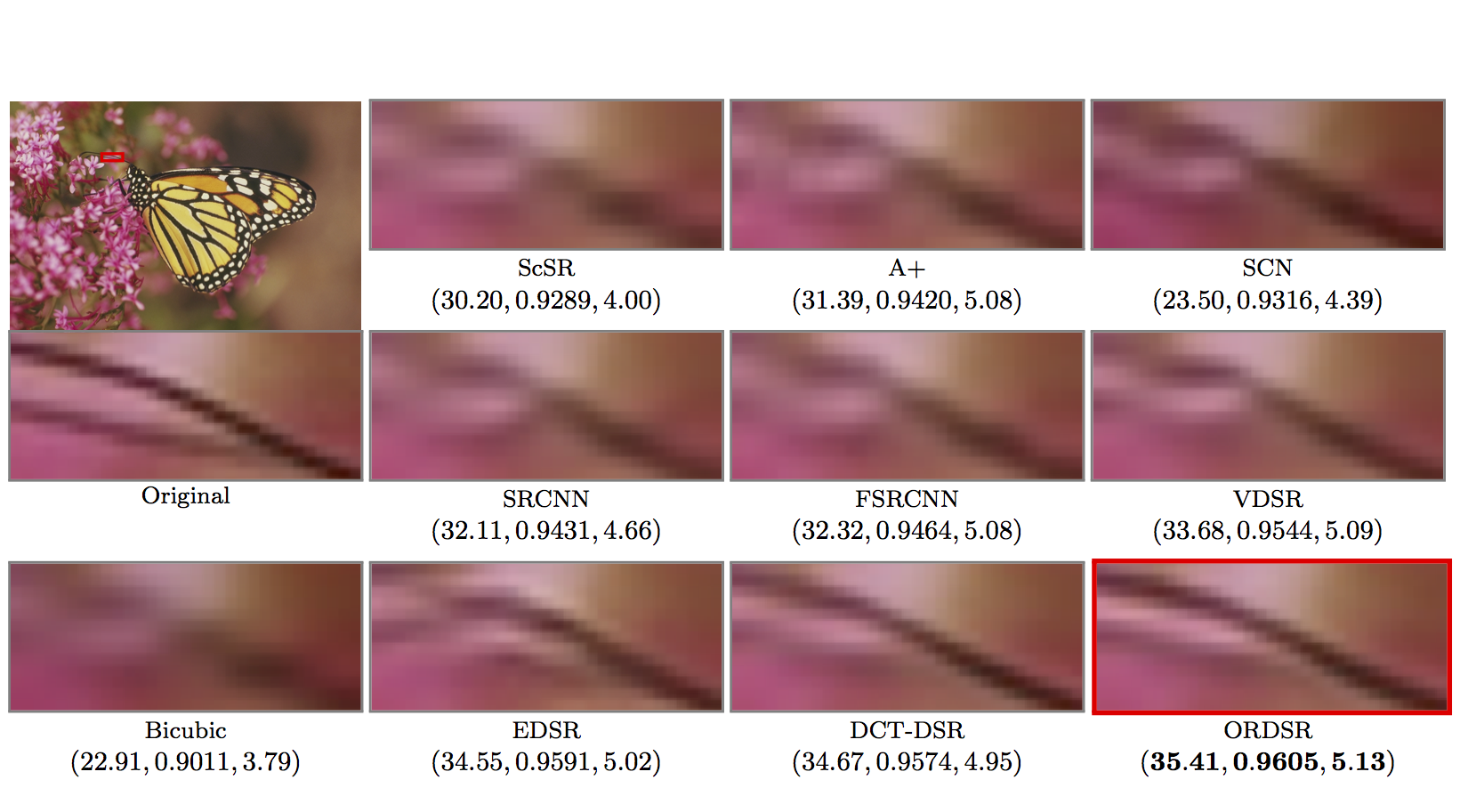Technical Report
Please find details about CDCT layer and ORDSR in our technical report.
Please find step-by-step CDCT layer DCT and IDCT illustration in this slide.
Network Structure

Evaluations

SR Results

Testing image monarch.bmp from dataset Set 14. The assessments are displayed under the SR results from different methods as (PSNR, SSIM). ORDSR produces best results with less artifacts.
Test Code
The version of ORDSR testing code. You can find it in [this Github repository].
version of ORDSR testing code. You can find it in [this Github repository].
Any feedback is welcome.
Related Publications
T. Guo, H. S. Mousavi and V. Monga , "Adaptive Transform Domain Image Super-resolution Via Orthogonally Regularized Deep Networks", in IEEE Transactions on Image Processing, vol. 28, no. 9, pp. 4685-4700, Sept. 2019. [IEEE Xplore]
T. Guo, H. S. Mousavi and V. Monga, “Orthogonally Regularized Deep Networks For Image Super-resolution,” in the IEEE International Conference on Acoustics, Speech, and Signal Processing, pp. 1463-1467, April 2018, Calgary, AB, Canada. [IEEE Xplore]
Selected References
J. Kim, J. K. Lee, and K. M. Lee, “Accurate image super-resolution using very deep convolutional networks,” in The IEEE Conference on Computer Vision and Pattern Recognition (CVPR Oral), June 2016 [paper].
D. Kingma and J. Ba, “Adam: A method for stochastic optimization,” arXiv preprint arXiv:1412.6980, 2014. [paper].
C. Dong, C. C. Loy, K. He, and X. Tang, “Learning a deep convolutional network for image super-resolution,” in Computer Vision–ECCV 2014, pp. 184–199, Springer, 2014. [paper].
C. Dong, C. C. Loy, and X. Tang, “Accelerating the super-resolution convolutional neural network,” in European Conference on Computer Vision, pp. 391–407, Springer, 2016.[ paper].
J.-B. Huang, A. Singh, and N. Ahuja, “Single image superresolution from transformed self-exemplars,” in Proceedings of the IEEE Conference on Computer Vision and Pattern Recognition, pp. 5197–5206, 2015.[paper].
Z. Wang, D. Liu, J. Yang, W. Han, and T. Huang, “Deep networks for image super-resolution with sparse prior,” in Proceedings of the IEEE International Conference on Computer Vision, pp. 370–378, 2015. [paper].
K. He, X. Zhang, S. Ren, and J. Sun, “Deep residual learning for image recognition,” in Proceedings of the IEEE Conference on Computer Vision and Pattern Recognition, pp. 770–778, 2016.[paper].